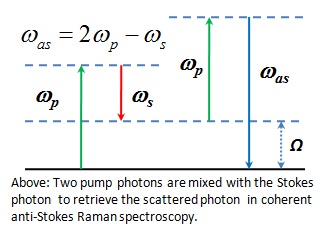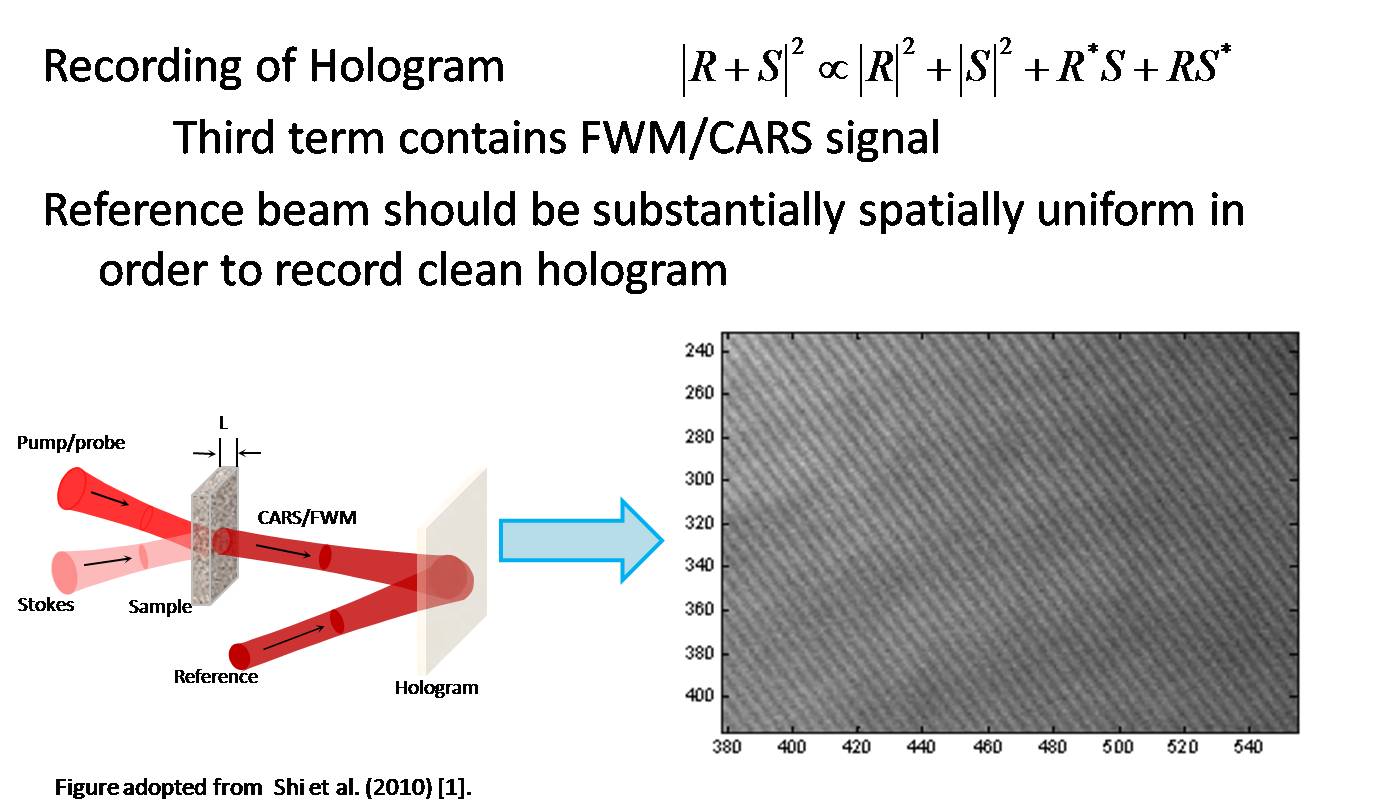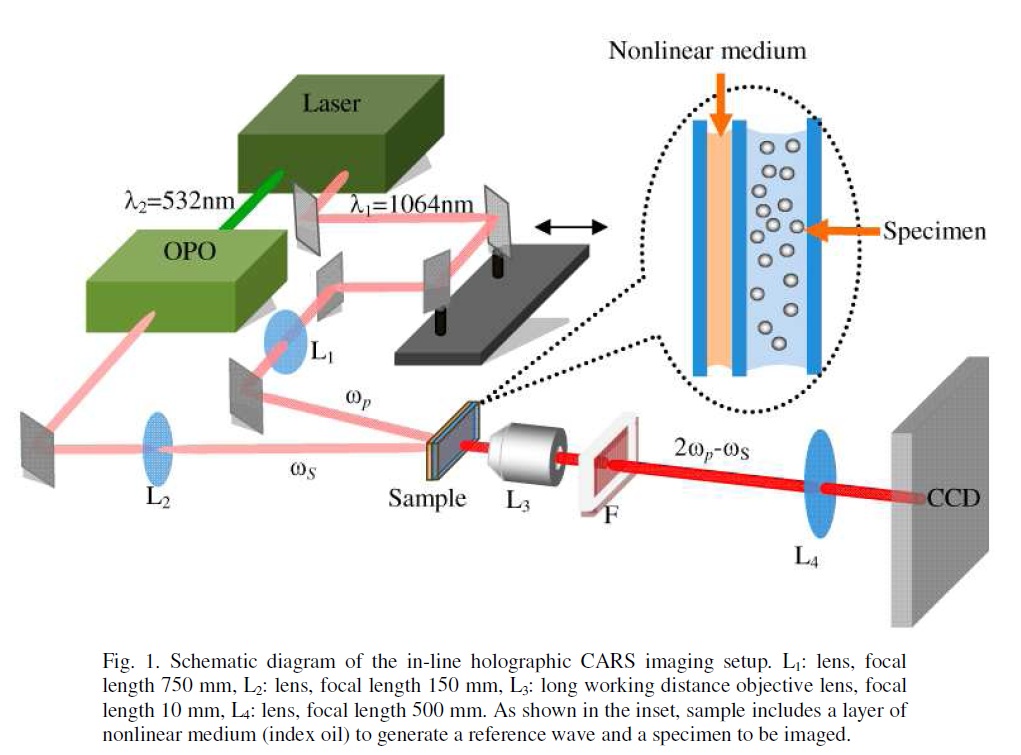The Ultrafast and Nonlinear Optics Lab at Penn State![]()
The Ultrafast and Nonlinear Optics Lab at Penn State![]()
Coherent anti-Stokes Raman Scattering
(CARS) Holography

CARS holography combines the chemical selective capability of CARS with the three-dimensional imaging capability of holography to establish a new technique for chemical and biological imaging. This technique allows for three-dimensional imaging of sample from a single two-dimensional recording of the CARS hologram [1,2]. In other words, scanning through the sample is not required for this technique. The digital reconstruction process is described in Shi et al. [1]. The technique is briefly described as follows: the two-dimensional Fourier transform of the recorded hologram is calculated and the R*S side band is filtered for analysis. This side band contains the complex CARS field, which can be reconstructed by taking the inverse Fourier transform. The three-dimensional image is then reconstructed digitally, by back (or forward) propagation of the complex CARS field using an algorithm based on standard diffraction principles.
Off-axis CARS Holography

We have developed a new way for nonscanning coherent anti-Stokes Raman scattering (CARS) imaging by using CARS holography, which can capture, at a single shot, both the amplitude and the phase of a coherent Raman image. It hence allows for chemically selective three-dimensional imaging at a laser pulse duration limited speed, which is not possible to achieve by using any of the existing laser scanning based Raman imaging techniques. We have demonstrated single-shot (pulse duration: ~5 ns) holographic CARS imaging of microspheres. Our results show that coherent anti-Stokes Raman holography can open a new path for nonscanning label-free imaging.
Above: Reconstructed three-dimensional imaging of suspended polystyrene micro-spheres. The video propagates through several reconstructed planes in the sample. Notice two spheres come into focus first and then a third at a further reconstructed plane (tens of microns away). This entire video was reconstructed from a hologram recorded during a single, 5 nano-second laser exposure!
In-line CARS Holography
We have demonstrated a simple approach for
inline holographic coherent anti-Stokes Raman scattering (CARS) microscopy [2], in
which a layer of uniform nonlinear medium is placed in front of a specimen to be
imaged. The reference wave created by four-wave mixing in the nonlinear medium
can interfere with the CARS signal generated in the specimen to result in an
inline hologram. We are experimentally and theoretically investigating the inline CARS
holography and thus far have showed that it has chemical selectivity and can allow for
three-dimensional imaging.

Figure and caption above: Adopted from Xu et al. (2010) [2].
References
[1] K. Shi, H. Li, Q. Xu, D. Psaltis, and Z. Liu, “Coherent Anti-Stokes Raman Holography for Chemically Selective Single-Shot Nonscanning 3D Imaging,” Physical Review Letters 104, 093902 (2010).
[2] Q. Xu, K. Shi, H. Li, K. Choi, R. Horisaki, D. Brady, D. Psaltis, and Z. Liu, “Inline holographic coherent anti-Stokes Raman microscopy,” Optics Express 18, 8213-8219 (2010).
Support
This work has been supported by the National Science Foundation.
The Pennsylvania State University Department of Electrical Engineering